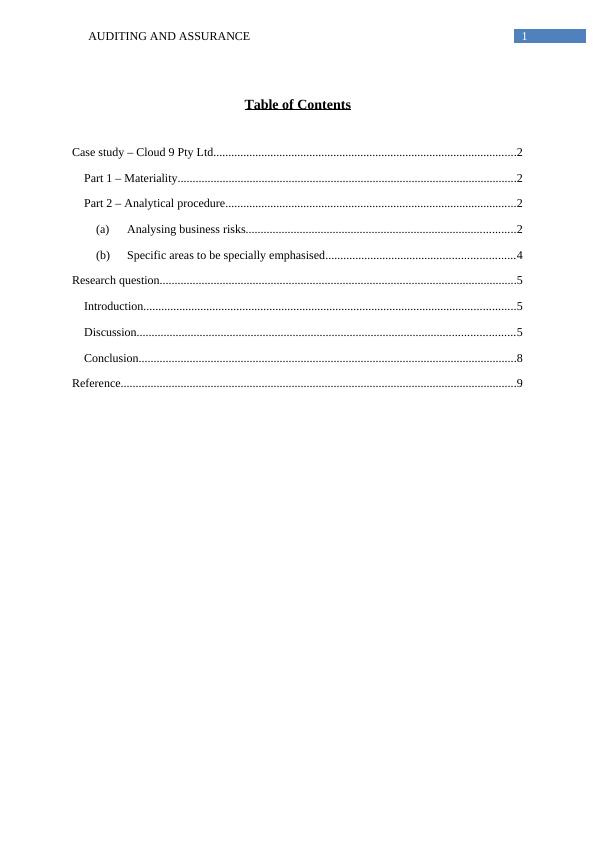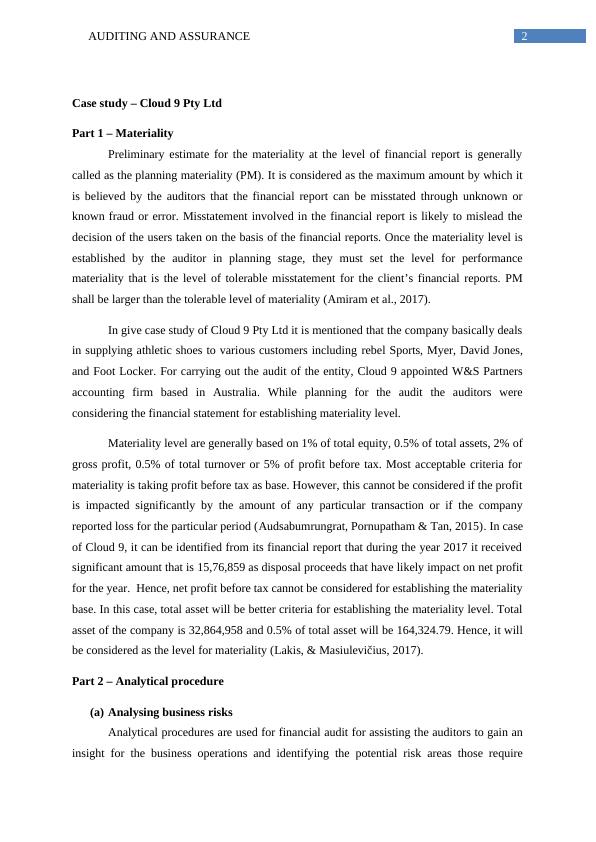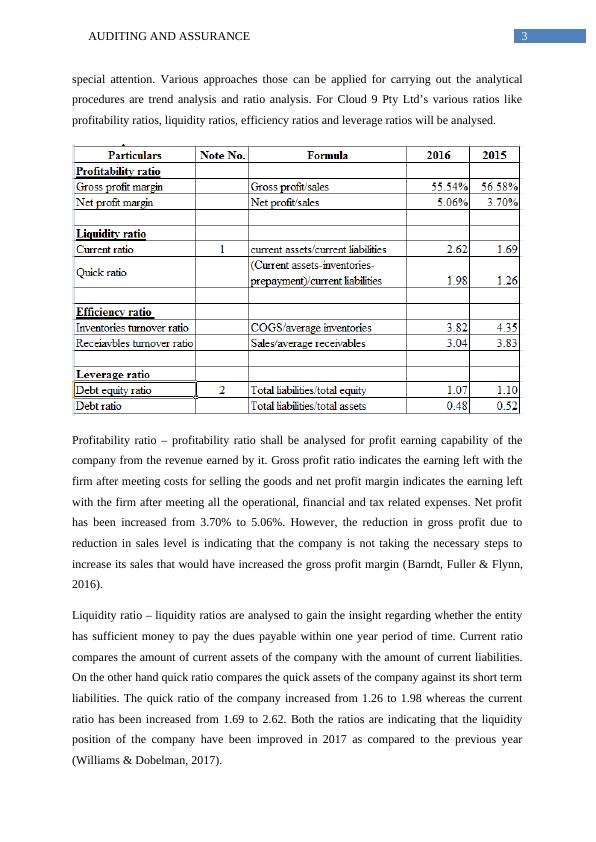Auditing and Assurance: Analyzing Materiality and Business Risks in Cloud 9 Pty Ltd
11 Pages2193 Words200 Views
Added on 2023-04-25
About This Document
The article discusses auditing and assurance in the context of a case study of Cloud 9 Pty Ltd. The article covers the following points:
- The concept of materiality and how it is established.
- Analytical procedures for identifying potential risk areas in the business operations of the company, including profitability, liquidity, and efficiency ratios.
- Specific areas of risk, including revenue recognition, inventory management, and financial reporting.
- The research question and conclusion of the case study.
Auditing and Assurance: Analyzing Materiality and Business Risks in Cloud 9 Pty Ltd
Added on 2023-04-25
ShareRelated Documents
End of preview
Want to access all the pages? Upload your documents or become a member.
Auditing and Assurance: Materiality and Analytical Procedure
|12
|1896
|301
Auditing and Assurance
|12
|2268
|379
Auditing and Assurance: Planning Materiality and Analytical Procedure
|13
|2137
|427
Audits and Ethics
|13
|2844
|31
Auditing and Assurance
|8
|1301
|347
Analyzing Financial Performance of Beautiful Products Ltd
|9
|1572
|102




